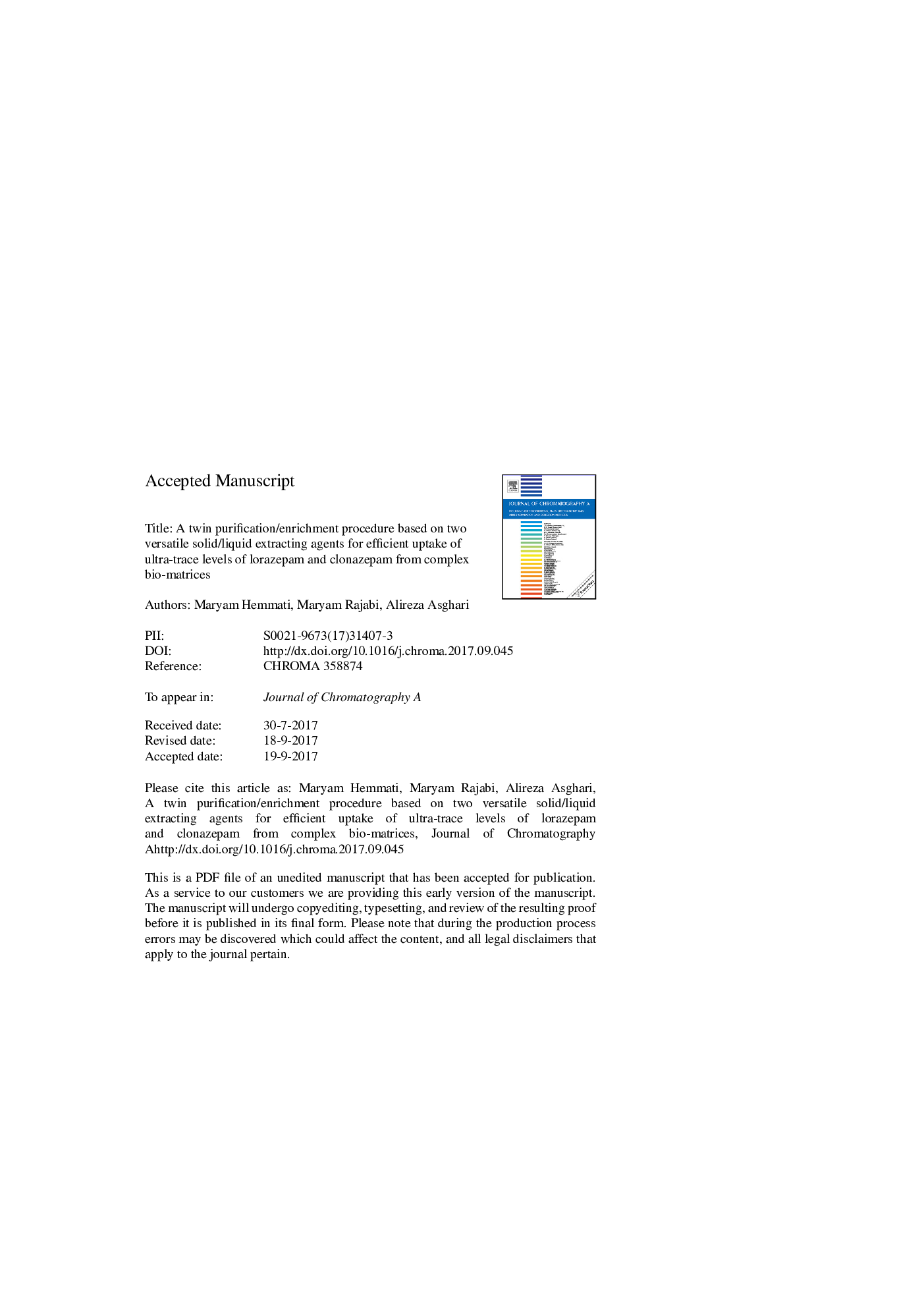| Article ID | Journal | Published Year | Pages | File Type |
|---|---|---|---|---|
| 7609608 | Journal of Chromatography A | 2017 | 38 Pages |
Abstract
In this research work, two consecutive dispersive solid/liquid phase microextractions based on efficient extraction media were developed for the influential and clean pre-concentration of clonazepam and lorazepam from complicated bio-samples. The magnetism nature of the proposed nanoadsorbent proceeded the clean-up step conveniently and swiftly (â¼5 min), pursued by a further enrichment via a highly effective and rapid emulsification microextraction process (â¼4 min) based on a deep eutectic solvent (DES). Finally, the instrumental analysis step was practicable via high performance liquid chromatography-ultraviolet detection. The solid phase used was an adequate magnetic nanocomposite termed as polythiophene-sodium dodecyl benzene sulfonate/iron oxide (PTh-DBSNa/Fe3O4), easily and cost-effectively prepared by the impressive co-precipitation method followed by the efficient in situ sonochemical oxidative polymerization approach. The identification techniques viz. FESEM, XRD, and EDX certified the supreme physico-chemical properties of this effective nanosorbent. Also the powerful liquid extraction agent, DES, based on bio-degradable choline chloride, possessed a high efficiency, tolerable safety, low cost, and facile and mild synthesis route. The parameters involved in this versatile hyphenated procedure, efficiently evaluated via the central composite design (CCD), showed that the best extraction conditions consisted of an initial pH value of 7.2, 17 mg of the PTh-DBSNa/Fe3O4 nanocomposite, 20 air-agitation cycles (first step), 245 μL of methanol, 250 μL of DES, 440 μL of THF, and 8 air-agitation cycles (second step). Under the optimal conditions, the understudied drugs could be accurately determined in the wide linear dynamic ranges (LDRs) of 4.0-3000 ng mLâ1 and 2.0-2000 ng mLâ1 for clonazepam and lorazepam, respectively, with low limits of detection (LODs) ranged from 0.7 to 1.0 ng mLâ1. The enrichment factor (EF) and percentage extraction recovery (%ER) values were found to be 75 and 57% for clonazepam and 56 and 42% for lorazepam at the spiked level of 75.0 ng mLâ1, possessing proper repeatabilities (relative standard deviation values (RSDs) below 5.9%, n = 3). These valid analytical features provided quite accurate drug analyses at therapeutically low spans and levels below potentially toxic domains, implying a proper purification/enrichment of the proposed microextraction procedure.
Related Topics
Physical Sciences and Engineering
Chemistry
Analytical Chemistry
Authors
Maryam Hemmati, Maryam Rajabi, Alireza Asghari,
